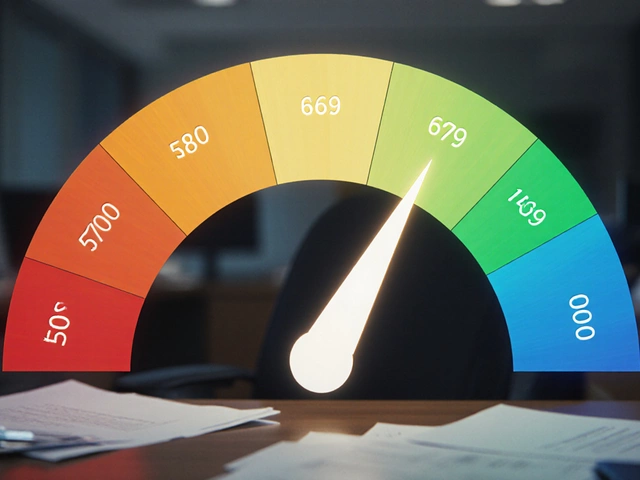
When people talk about earning $5,000 every month, it sounds like a solid number. But is it actually enough for what you want? In expensive cities, that cash can feel tight once rent and basics are out of the way. In smaller towns, it goes a lot further—sometimes even feels like luxury. So, before you get too excited or too nervous about five grand a month, the real question is: what does it do for you right now?
If you’re thinking about this in terms of the stock market and investing, $5,000 a month gets even more interesting. That’s real money you can put to work. Maybe you’re looking at covering bills first, but if you can stash even a part of that into stocks, things can really snowball over time. Compound growth isn’t magic, but it’s pretty close when you stick to it.
- How Far Does $5,000 a Month Really Go?
- Building Wealth: What $5K Means for Investing
- The Stock Market Angle: Growing Your $5,000
- Smart Moves for Making $5,000 Work Harder
How Far Does $5,000 a Month Really Go?
So, you’ve got $5,000 coming in each month. That sounds comfortable, but let’s break it down. The truth is, how far is $5,000 a month good depends a lot on where you live and what your lifestyle looks like. Living in New York City? Rent alone can eat up $3,000 or more every month for a one-bedroom. If you’re in a smaller city or town, you might find a decent apartment for under $1,200. Housing makes the biggest impact on how far your money stretches.
Here’s how $5,000 a month might look for a single person:
| Expense | NYC | Kansas City |
|---|---|---|
| Rent | $3,000 | $1,100 |
| Utilities | $200 | $150 |
| Food | $600 | $400 |
| Transportation | $150 | $200 |
| Misc/Entertainment | $350 | $250 |
| Total | $4,300 | $2,100 |
This table shows real numbers for 2025. In New York, after covering all basics, you’re left with $700—barely a safety cushion. In Kansas City, though, you could have nearly $3,000 left after needs. That’s a huge difference.
If you’ve got kids, healthcare costs, or any kind of debt, that buffer gets even slimmer. On the other hand, if you split expenses with a partner, suddenly $5,000 a month can go a long way. My friend Sam in Dallas covers his mortgage, vehicles, and savings with less just because his cost of living is low and he budgets well.
So, is $5,000 a month good? It depends on your location, your fixed costs, and what you want from life. If you play it smart and keep your expenses in check, you’ll have room to grow that money in the stock market or use it for financial goals way faster.
Building Wealth: What $5K Means for Investing
So you’re pocketing is $5,000 a month good, and you want to know what that means for your investing game. Here’s the real deal: $5,000 is enough to make some serious moves, if you’re smart about it. Even if you just add $1,000 per month to your investment account, you’re growing your stash way faster than most beginner investors out there. Consistency is where the magic happens.
Look at it this way—let’s talk simple numbers. If you invest $1,000 every month into an S&P 500 index fund, and the market performs like it has over the past 50 years (about 10% average annual return), after 10 years you’d have right around $200,000. That’s without trying to pick hot stocks or timing the market. The key is staying in the game and not panicking when things get rocky.
Now, what if you could invest more than $1,000? The numbers get even better. Check out this quick breakdown:
| Monthly Investment | Years | Potential Value* |
|---|---|---|
| $1,000 | 10 | $200,000 |
| $2,500 | 10 | $500,000 |
| $4,000 | 10 | $800,000 |
*Based on historic 10% average annual returns, compounding monthly.
What makes this even cooler? That’s just from investing a chunk of your $5,000 every month—without fancy strategies or taking wild risks. If you keep your other expenses under control and have an emergency fund, it frees up more money to invest. This moves you closer to legit financial freedom. And yeah, starting early gives you a huge advantage, but even if you’re getting a late start, $5,000 a month puts you in a solid position to catch up fast.
Just remember: The real power isn’t in the amount you start with, but in your habit and discipline. Regular investing—even if it’s not the full $5,000—lets you enjoy stock market income down the road, and those dollars really do start working for you after a while. Avoid short-term thinking, automate your contributions, and focus on the long haul. That’s how you turn decent monthly income into real wealth.

The Stock Market Angle: Growing Your ,000
So, you’ve got is $5,000 a month good bouncing around in your head, and you’re thinking about stocks. Let’s get real about what that monthly cash can do inside the market. Investing $5,000 every month adds up fast. If you put that money into a simple low-fee S&P 500 index fund, and the S&P averages its long-term 7% annual return after inflation, you’re looking at some legit growth down the line.
| Years Invested | Monthly Investment | Average Return | End Value |
|---|---|---|---|
| 10 | $5,000 | 7% | $862,000 |
| 15 | $5,000 | 7% | $1,664,000 |
| 20 | $5,000 | 7% | $2,965,000 |
That’s the magic of regular investing. Even if you can’t put in all $5,000 every single month, just being consistent makes a big difference. Don’t get stuck thinking you need to pick a genius stock, either. Time in the market usually beats trying to time the market—index funds just work for most people.
Worried about starting late or only putting in smaller amounts? You’re not out of luck. Even beginners who set aside $500 or $1,000 a month see their money grow if they stick with it. I remember when Larissa and I first started, we couldn’t go big every month, but we stayed steady. The key is putting cash in and letting it grow, month after month.
- Set up automatic transfers so you don’t forget.
- Stick to low-fee funds—fees eat your returns over the years.
- Don’t panic during market drops; staying invested wins long term.
Your $5,000 a month is a big opportunity to build wealth, not just cover bills. Take it seriously and get started—even if you’re learning as you go.
Smart Moves for Making $5,000 Work Harder
If you’re pulling in is $5,000 a month good and want it to last, you can’t just park it all in a savings account and hope for the best. That cash has to hustle. First, set up an emergency fund—about three to six months of expenses. Why? A 2023 Bankrate survey found that 57% of Americans couldn’t cover a $1,000 emergency with savings. Don’t be in that group.
Next, look at where your money goes. Track it for a month. Most people are shocked by how much they blow on food delivery or streaming subscriptions. Cut the waste first. Then, start making your dollars work for you.
- Automated Investing: Set up auto-deposits into a broad market ETF or index fund. History shows the S&P 500 has averaged around 10% per year over the last century. Easy, reliable, and you don’t have to babysit stocks daily.
- Max Out Retirement Accounts: Hitting your IRA or 401(k) limits (if your job offers one) brings sweet tax perks. If you can swing even $500 a month before spending anything else, future-you will thank you with an easier retirement.
- Use Employer Match: If there’s a 401(k) match, grab all of it. That’s free money—seriously, it’s part of your compensation, so don’t leave it on the table.
- Diversify: Don’t put it all in stocks. Maybe keep some in high-yield savings, REITs, or even I-bonds if inflation is high. Keeps your risk lower.
- Keep Debt in Check: Knock out high-interest credit card balances before investing. If you’re paying 20% in interest—it’s a losing game no matter what the market does.
If you want a quick look at how $5,000 can stretch, here’s what happens if you invest $1,000 per month in an S&P 500 index fund for 10 years at an average 8% annual return:
| Monthly Investment | Years | Estimated Return (8%) |
|---|---|---|
| $1,000 | 10 | $183,504 |
That’s just a fifth of your income each month, and you end up with almost $184k after 10 years. The trick isn’t to make wild bets—it’s regular, boring, steady action. That’s how you make your stock market income take you from just getting by to calling some shots down the road.








Write a comment